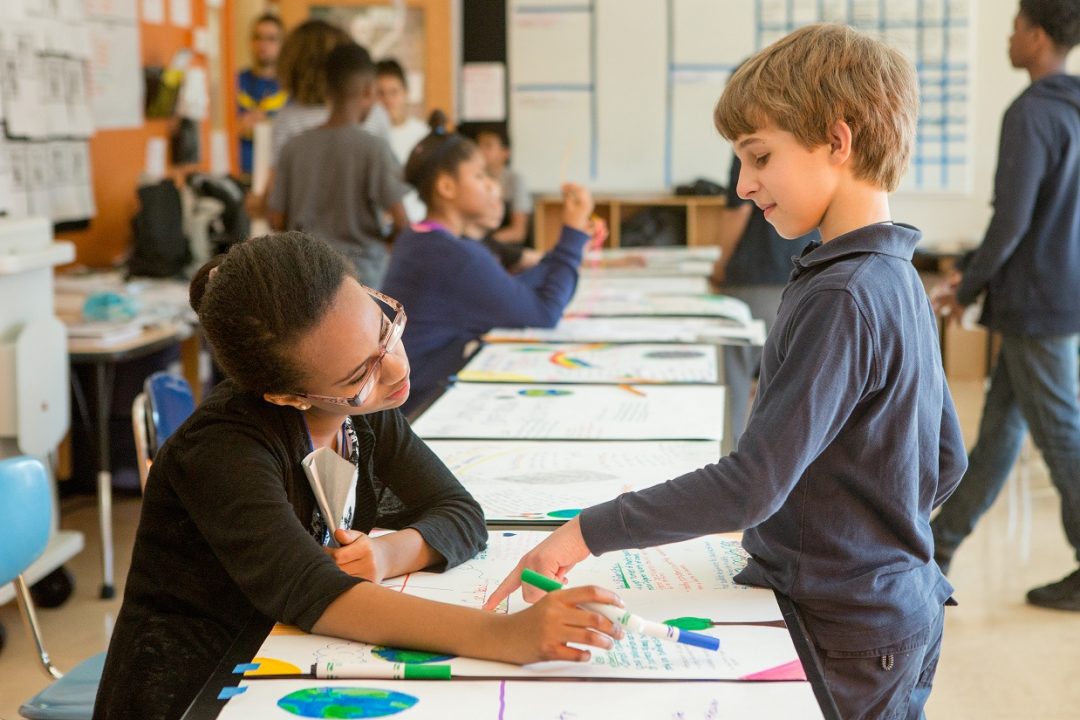Day 15: The Science Meeting

-
Culminating Project
OVERVIEW
Over the course of the past few weeks, the children have learned new skills in scientific inquiry and new science content about food chains and producers. Today, they will share the results of their research and investigations via an oral and visual presentation.
We suggest 45 minutes for the presentations, but the teacher may decide how much time to allow based on class schedule, the number if teams, and learners’ needs.
MATERIALS
Each team needs:
- team product
- algae sample (optional, if needed for presentation)
- timer or clock (optional)
- sticky notes
- pencils
SETUP
- Ideally, the tables or desks should be set up in a semicircle so that all teams can see each other; this configuration will also help engage all learners in the discussion.
- Teacher should sit within the semicircle as well.
- Decide the order in which the teams will present.
- Each presenting team will stand in front of the class and be prepared to answer any questions.
PROCEDURE
- Instruct the teams to gather their finished projects and any supplementary materials they need for the presentation.
- Read the order of team presentations and let the teams know how much time they will have to present.
- Ask the other teams to write down any questions or comments they may have on sticky notes and to wait until the presentation is over before asking their questions or commenting.
- Begin the presentations!
- During the Q & A portion, allow learners to ask their own questions of the team or make their own comments. The presenting team will answer the questions and respond to comments.
- If needed, the teacher may add open-ended questions, such as “Why do you think …?”
“How can you explain…?” and “What do you know now that you didn’t know or understand before?”
DEBRIEFING
- After the last presentation is given, ask teams to reflect on what they noticed across all the presentations. What did each presentation tell us about ecosystems and producers? What was the same about all ecosystems? What was different about each ecosystem?
- Invite children to talk about the scientific process of this unit, what they enjoyed, and what they would like to continue to do.
- Congratulate the class on their scientific investigations and their demonstrated new skills while working as scientists. Add that they not only delivered great presentations but also demonstrated that they can think, work, speak, and write like scientists!
EVALUATE
- Were the presentations well organized?
- Were the claims made supported by evidence?
- Did learners make a clear connection between their research and the science investigation?
- Did they communicate new or improved understanding about food chains and ecosystems?
- Did they use scientific language in their presentations?


